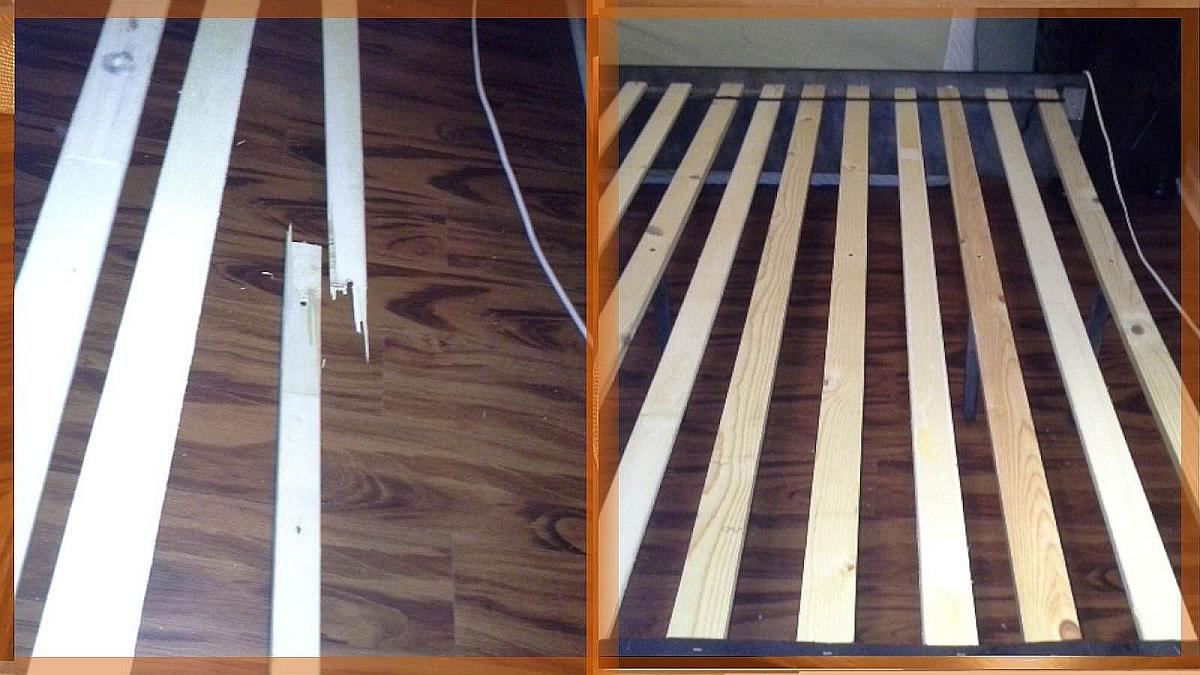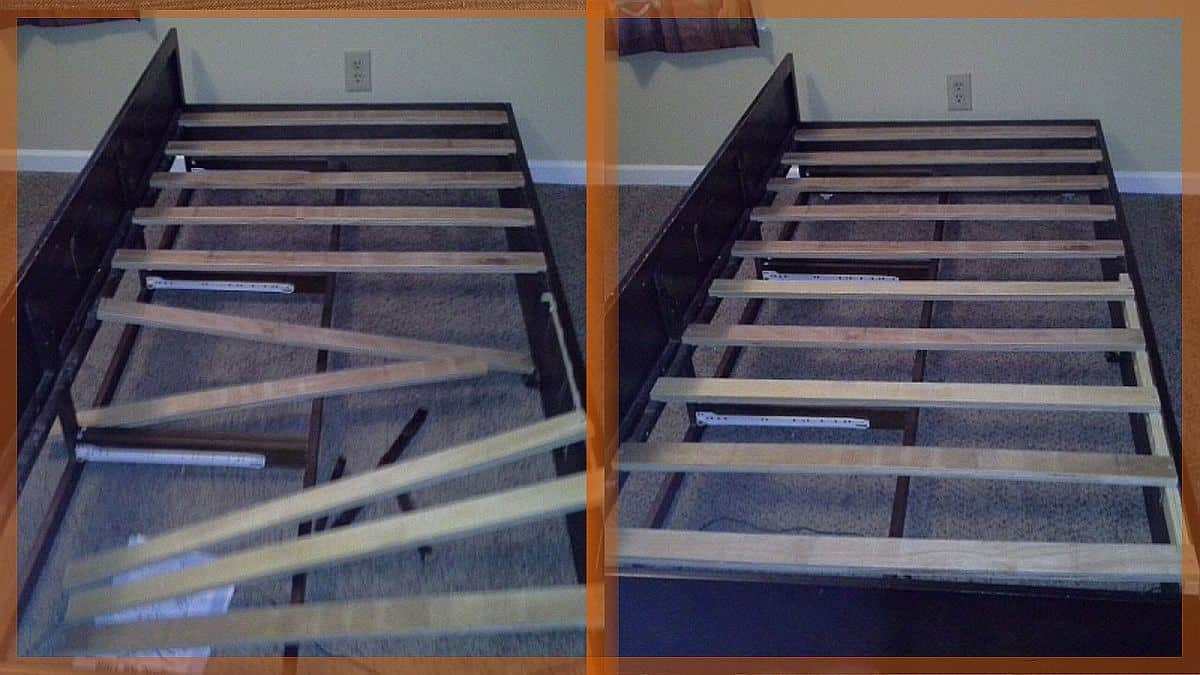
Living on the couch is not luxury accommodation.
Sleeping on that air mattress you roll out for unexpected guests isn’t much better. A night on that and well… considering how you feel in the morning, even making coffee becomes a valiant act!
You stretch and stretch – and you still feel like the day after a rough night before. It’s official – you need your bed repaired.
Not Broken But There are Scary Noises from the Frame?
A damaged frame can cause instability, squeaking noises, and uneven mattress support, leading to discomfort and restless sleep. Over time, the joints connecting the bed frame components may loosen due to repeated stress, poor assembly, or low-quality materials.
Or, the sound may be coming from the slats. Sometimes the factory sends it out with 3-4 thin soft pine slats to hold up a heavy mattress. The slats can become dislodged, move around and suddenly, there’s a depression where the mattress should be supported. This is just an accident waiting to happen.
If this is the case, simply to add a few more support slats and middle legs. Otherwise, usage will continue stress the frame until it finally complains enough to break.
In other words, if you start hearing squeaks, it’s time to address the problem – before it is a problem. Groans and squeaks are notoriously hard to track down. However, it’s still always a good idea to make sure your frame and your mattress are properly supported to extend it’s lifetime.
You may also be acutely aware… a poorly supported back frame and mattress can cause physical problems, as well.
Broken Slats?

Broken bed slats. It happens all too often. A kid jumps on the bed. Bed slats get old and weak. The bed is ever so slightly misaligned. It can even happen when you simply move the bed over a bit. Or any number of reasons!
Broken or Cracked Side Rails?

When the bedrails can break, split or become weakly attached to the headboard or footboard, consider this your opportunity to make it more secure and extend your bed’s life.
If a side rail is cracked or broken, unless you know what you’re doing, you’re better off buying a new set. Why take a chance of you or someone you love getting hurt in the middle of the night?
More on Bed Slats Here
What if You Can’t Fix It and Need a New Frame?
Wooden bed frames can crack or warp from excessive weight, changes in humidity, or poor-quality wood. If it’s broken beyond making it safe, or you just don’t want to tackle that, we completely understand. Having done that for so many years, we agree. Sometimes, you’ve just got to ‘cry uncle’ and get something new.
Might as well get the bed of your dreams. First, though, head over to our guide to different types of bed frames.
Why Choose Us?
- We bring 40 years of experience and technologies to your furniture repair or cleaning.
- We’re family owned and operated – and a bit old-fashioned when it comes to values.
- We service the western edge of Tampa and all of Pinellas County.

